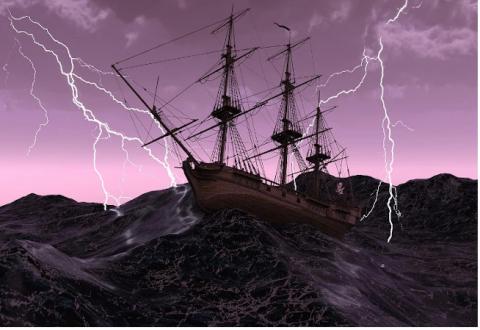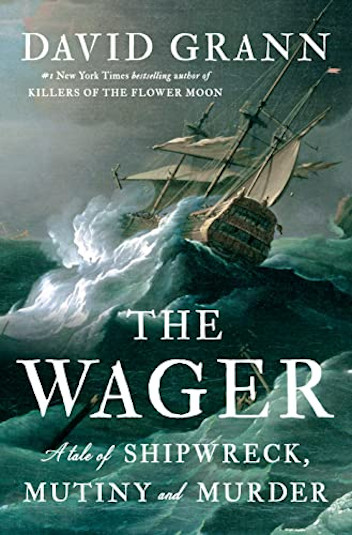Disaster at Sea and Survival in David Grann’s ‘The Wager’

The Wager: A Tale of Shipwreck, Mutiny and Murder
Doubleday
329 pages
At the outset of his new book, The Wager, about a shipwreck and subsequent events set in 1740, David Grann notes, perhaps needlessly, that “I did not witness the ship strike the rocks or the crew tie up the captain,” and neither did he “see firsthand the acts of deceit and murder.” But it’s equally true that Grann has undertaken exhaustive research, scouring old journals, “washed-out logbooks” and many pages of courtroom testimony, to get at the heart of this story.
The result is a sweeping, old-fashioned yarn about disaster at sea. The book’s subtitle (A Tale of Shipwreck, Mutiny and Murder) accurately describes what awaits the reader. And if The Wager falls short in places, it’s not due to a lack of drama inherent in mutiny and murder on a desolate, far-off island.
A key question underpins this account—that is, when differing individuals offer differing accounts of what occurred, whom can we believe?

“We all impose some coherence—some meaning—on the chaotic events of our existence,” Grann writes. “We rummage through the raw images of our memories, selecting, burnishing, erasing. We emerge as the heroes of our stories, allowing us to live with what we have done—or haven’t done.”
The slippery nature of meaning and civility is demonstrated when, after running aground off the coast of Patagonia, survivors of the shipwrecked Wager quickly descend into a dog-eat-dog, every-man-for-himself mindset. Years later, some members of the mutinous crew find their way back to civilization; eventually, other survivors (including the officer in charge) return with their own version of the tumultuous events.
An acrimonious court martial ensues.
Grann does an exceptional job of placing us within the “wooden world” of nautical affairs in the mid-18th century. As he notes, much of the era’s maritime terminology has seeped into the wider culture back on solid ground:

“To ‘toe the line’ derives from when boys on a ship were forced to stand still for inspection with their toes on a deck seam. To ‘pipe down’ was the boatswain’s whistle for everyone to be quiet at night, and ‘piping hot’ was his call for meals. A ‘scuttlebutt’ was a water cask around which the seamen gossiped while waiting for their rations. A ship was ‘three sheets to the wind’ when the lines to the sails broke and the vessel pitched drunkenly out of control.”
The Wager’s original orders were to accompany a British flotilla of warships around Africa’s Cape Horn, intent upon plundering Spanish vessels and seizing precious cargo of silver and gold. But the near-apocalyptic marine conditions in that remote part of the world prove the ship’s undoing:
“And then the clouds blackened, blotting out the sun. The winds began to wail, and angry waves emerged from nowhere, exploding against the hull. The ships’ prows … plunged into the deep hollows, before rearing upward pleadingly toward the heavens. The sails convulsed and the ropes whipped and the hulls creaked as if they might splinter. Although the other ships gradually made headway, the Wager, loaded down with cargo, was caught in the furious currents and was being driven eastward … on the verge of being dashed to pieces.”

And yet, for all the vivid writing about fighting for life on an island time has forgotten, The Wager fails to completely engage. It might be the plethora of details, or tracking the numerous actors involved in this bizarre historical episode, or simply that the book’s length outstrips its narrative momentum.
Still, there’s no doubt the tale is firmly under the control of a master storyteller. The Wager is a classic example of why reading about shipwrecks and survival is always more fun than undergoing the experience itself.
Author Bio:
The Confessions of Gabriel Ash, a novel by Lee Polevoi, Highbrow Magazine’s chief book critic, has just been published.
For Highbrow Magazine
Image Sources:
--Noupload (Pixabay, Creative Commons)
--Kordi Vahle (Pixabay, Creative Commons)
--Clker Free Vector Images (Pixabay, Creative Commons)
--Doubleday































































































































































































































































































































